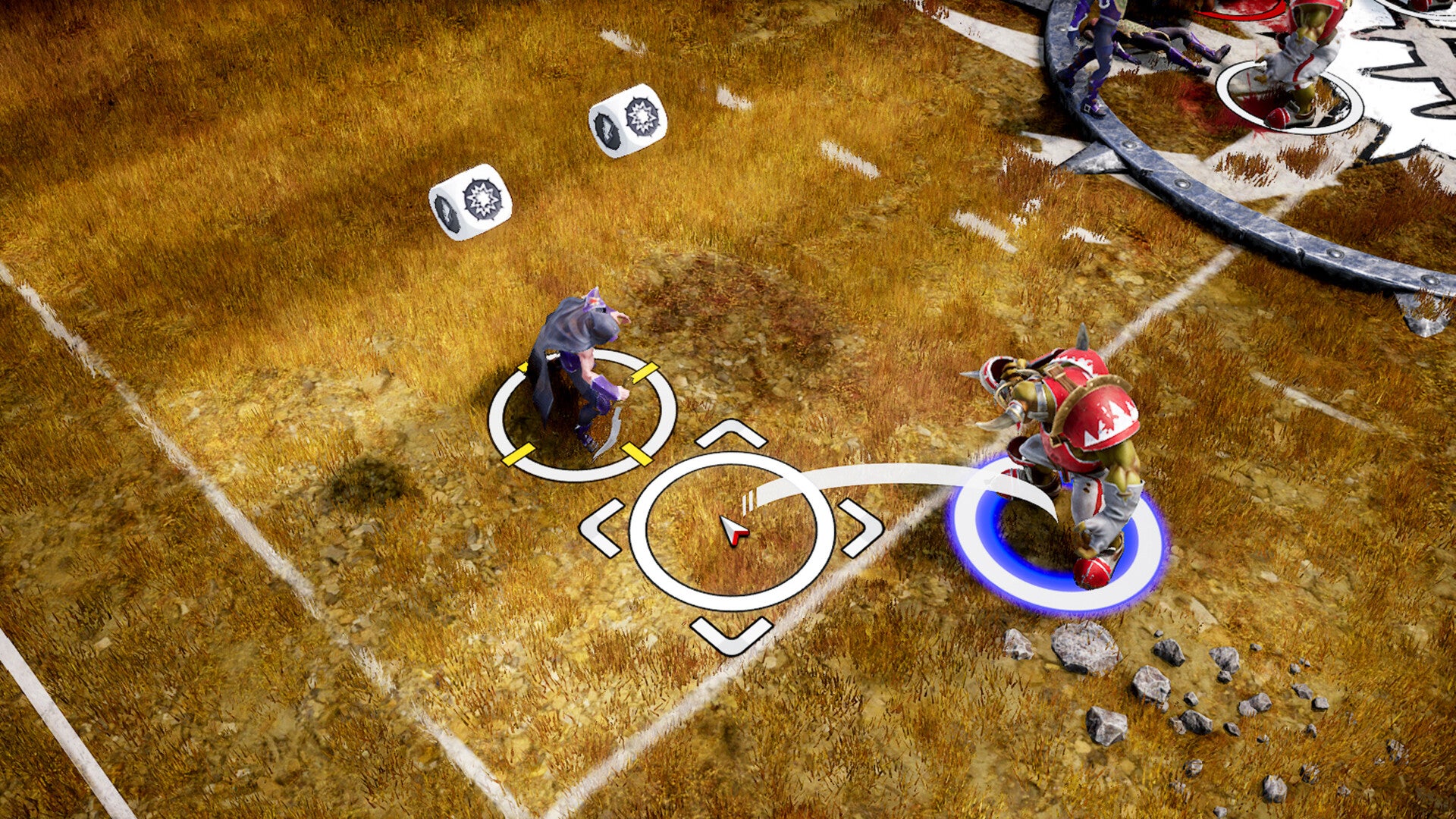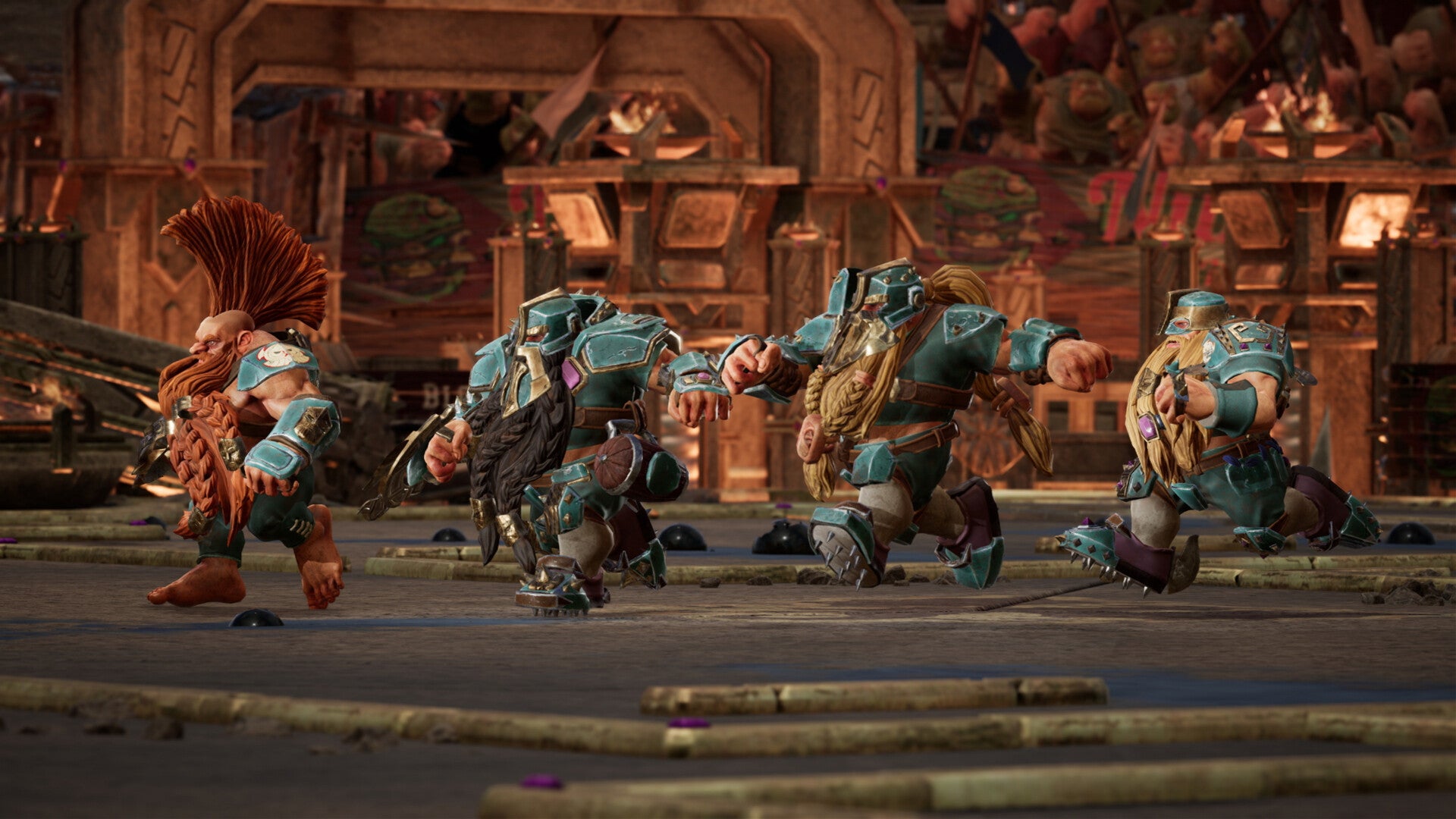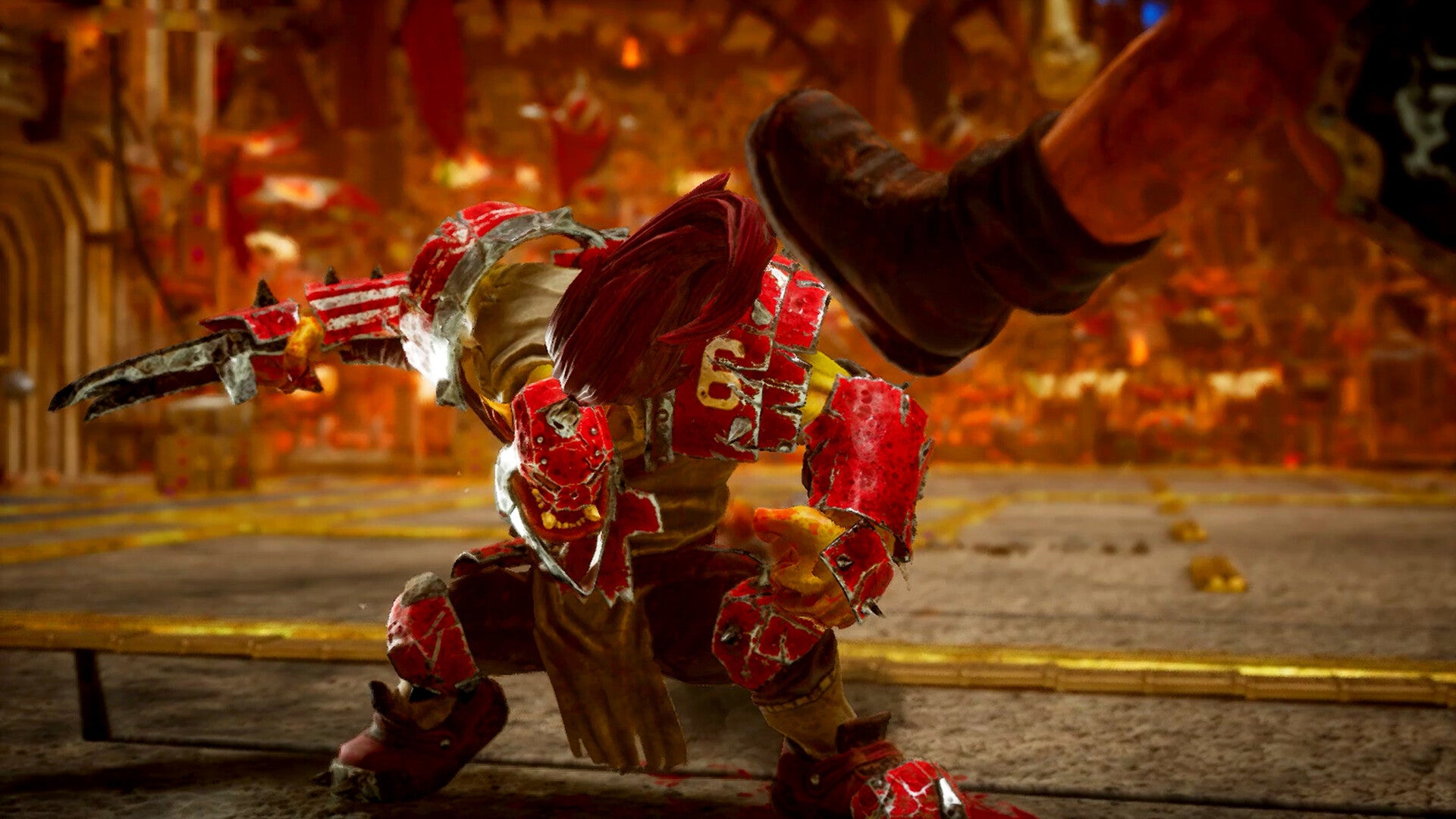“Here is what may be the final edition of Blood Bowl,” read the opening page of that community manual. “This is the rulebook designed to send Blood Bowl into a perpetual format. The Games Workshop is no longer interested in providing true support for this game.” Yet in 2009, Games Workshop backed Cyanide in its attempt to recreate Blood Bowl on the PC. That first game was faithful, if unadorned, and a sequel in 2015 finally delivered the audio-visual crunch to match the mental image of a beastman forcibly lifting an elf into the air with a single punch. Soon afterwards, Games Workshop went further - dusting off tabletop Blood Bowl for a new edition. Fans were finally relieved from the responsibility of life support, and joined by a new generation who had discovered the joys of grognard gridiron by competing online. “It’s always a great thing to be able to showcase and sustain these great tabletop games,” Brésard says. “I have to think that, yes, we played our part in showing Games Workshop the interest of the community in more Blood Bowl.” Today, the tabletop and digital versions of Blood Bowl exist in parallel, as closely coordinated as blitzers and blockers. Brésard is the project manager of the upcoming Blood Bowl 3, which Cyanide has confirmed will use the latest tabletop ruleset, released in 2020. It’s a new way of working for the Parisian developer. “On the one side it’s easier, in the sense that we have less design to do ourselves,” Brésard says. “We just have to copy what [Games Workshop] do, basically. But on the other side, we also have less margin for creativity. We have to abide by what they’re doing.” Brésard previously worked on Space Hulk: Tactics, which was a more liberal interpretation of its Warhammer source material - mixing up the XCOM-esque setup of the 1989 board game with a new card system. By contrast, Games Workshop has very specific designs for Blood Bowl. “They have this very strong will to bring back Blood Bowl in a more controlled and official environment,” Brésard says. “There are the new rules, there are the new miniatures. So they want us to support this specific version, they don’t want us to be something else. We have to support each other.” When I first played Blood Bowl 3 in beta, I couldn’t help but wonder why it existed. Blood Bowl 2 had felt definitive - the perfect way to play an influential 80s classic while letting a clever computer do all the dice maths and notekeeping for you. This new version felt like neither a mechanical nor presentational leap forward - at least, not in any sense I could detect as a fairweather player of high fantasy football. Behind the scenes, though, Blood Bowl 2’s in-house engine had gone as far as it could. “It was hard to continue to iterate,” Brésard says. “It would have been very, very hard to change it to comply with the new rules, and also to be able to have a more visually stunning experience. We had to change to the Unreal Engine.” There are, of course, commercial reasons for building another sequel as well. “Cyanide has been bought by Nacon - before we worked with Focus Home Interactive,” Brésard points out. “Obviously, we want to have a Nacon Blood Bowl. And Games Workshop wanted us to make a new one as well, to follow their new lines of miniatures.” While I couldn’t immediately appreciate Games Workshop’s recent rules tweaks as a lapsed player, Brésard points to a new passing ability, and the fact that any unit can now jump over a prone or stunned counterpart, opening up new tactical movement options. “It hasn’t changed fundamentally,” he says. “But it has changed enough to require a new game and to feel different.” Perhaps most significantly, Games Workshop has changed the rules around rerolls - the limited number of chances you get to correct a failed move. They’re a critical aspect of the game, since every failed throw, catch, or haymaker in Blood Bowl results in a turnover, immediately ending your turn and passing control to the other team. A series of early turnovers is almost guaranteed to lose you a match. Risk management, therefore, is the name of the game - and the careful application of rerolls is a key skill when it comes to navigating the chaos of probability, ensuring your most crucial plays come off as intended. In Blood Bowl 3, for the first time, you can make several rerolls in a single turn. It’s a change that has the potential to make a match both more dynamic and more farcical. “You have to be careful,” Brésard says. “You still have to manage your rerolls for eight turns. Yes, you can make more spectacular moves in one turn, but then get wrecked in the following ones, because you’ve run out of rerolls.” Blood Bowl 3 represents a doubling down, then - a game becoming ever more itself, rather than taking on the characteristics of genremates like XCOM, Mario + Rabbids or Marvel’s Midnight Suns. “Even though we’ve worked on single-player modes and campaigns, Blood Bowl is still at heart a multiplayer game,” Brésard says. “And in that regard it fits in a different niche than all the other tactical games you mentioned. I don’t expect Blood Bowl to become as popular as XCOM, but it has its own niche.” While Cyanide knows its game and market intimately, that institutional knowledge hasn’t necessarily sped up development. This sequel was originally intended for release in August 2021, and has been pushed back on multiple occasions since. “One reason obviously was the pandemic, everyone was hit by this,” Brésard says. On top of that, the studio misjudged how long it would take to make a Blood Bowl game from scratch: “We thought that we would be quicker since we’ve done it twice already. But actually it’s still quite a lot of work, and having done it before doesn’t make it go that much faster.” There’s also a third, more positive factor behind the protracted development. Cyanide has run three open betas to date, and committed hard to acting on player feedback. “We’ve had to rethink our plan, look back on what we’ve done and what we have to improve,” Brésard says. Blood Bowl 3 has an entirely new user interface as a result of this feedback loop, since players pointed out it was taking up too much space on-screen. Matches have become slightly less colourful, too, after some complained of headaches. And Cyanide has worked hard to make the pitch more readable - a perennial problem in a game which asks you to scan a large field for specific players with individual roles and special abilities against the clock. “This issue is there in the tabletop version as well,” Brésard says. “We have the luxury to be able to differentiate [using] animations and idle poses.” Readability is the reason I first adopted the Lizardmen as my home team - even at 100 paces, nobody can mistake the velociraptor-esque Skink for a towering Saurus. In the new game, their closest equivalent are the Black Orcs, one of two new factions alongside the Imperial Nobility. Both will replace the traditional defaults, Humans and Orcs. “Having them as the new base teams really changes things,” Brésard says. “They are really different [from each other] to play. When you were playing with Humans and Orcs, they had mostly the same positions.” If your favourite doesn’t appear in the launch roster of 12 teams, fear not: as with previous entries, Cyanide plans to build on Blood Bowl 3 in the months and years following its release. Every three months, a new season will bring a major update and an extra team, which can be unlocked via a battle pass-style rewards system. “You can either buy the premium version of the Blood Pass and unlock the new faction directly,” Brésard explains, “or you can play through 50 levels of the Blood Pass and then get the faction for free.” The plan is to keep going until Cyanide runs out of official teams to adapt. Then, the studio will start making new ones. “We haven’t got that much time to think about what we would do,” Brésard says. “I definitely have some ideas - more thematic ideas than gameplay ideas.” But given that there are dozens of factions in the rulebook, it’ll be years before Cyanide gets to start adding pages of its own. For now, the developer is in lockstep with Games Workshop, working in service to the strange, sublime murdersport it helped to revive.





